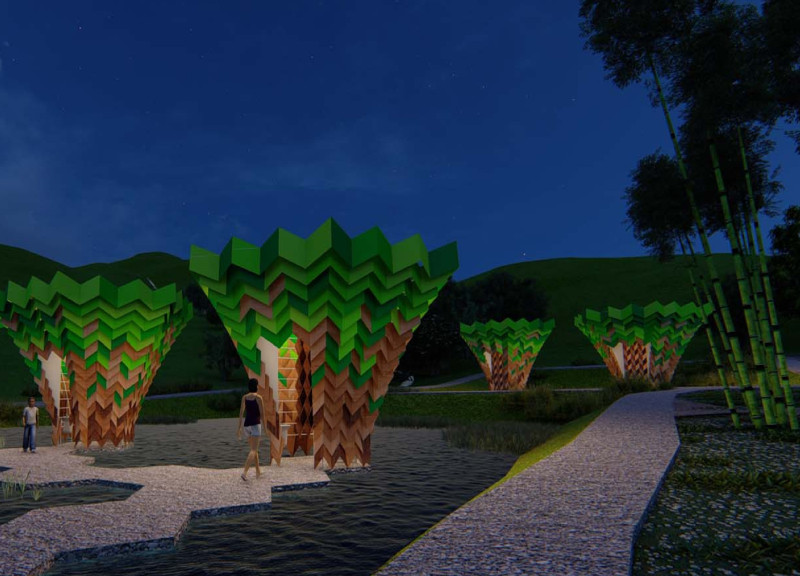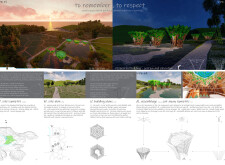5 key facts about this project
## Project Overview
The "To Remember, To Respect" design is situated on the easternmost island of Hong Kong and incorporates a green burial garden alongside ablation facilities. This project aims to explore the intersection of architectural design, landscape integration, and ecological sensitivity by creating a space that emphasizes memory, respect for nature, and sustainability. The site reflects the cultural and spiritual connections that local communities maintain with their environment, accommodating ceremonies of remembrance and fostering a tranquil atmosphere for grieving families and community members.
### Spatial Organization and Accessibility
The site plan features a carefully considered arrangement of three distinct ablation units designed to ensure privacy and safety for visitors. This layout facilitates ease of navigation throughout the garden, providing areas designated for individual contemplation as well as communal gatherings. Pathways are designed to follow the natural contours of the land, encouraging exploration while integrating vegetation that enhances the ecological character of the garden and burial spaces.
### Sustainable Design and Materiality
The architectural form employs a "smart shield" design that promotes natural ventilation and energy efficiency, with stacked modular units enhancing verticality and airflow. Key materials include bamboo for decorative and structural elements, reinforced concrete for structural integrity, glass to create transparency between indoor and outdoor spaces, and natural stone for pathways that blend with the surrounding landscape. Prefabricated components streamline the construction process, allowing for a more efficient assembly while reducing waste and enabling high-quality craftsmanship suited for its setting.
Incorporating interlocking geometric patterns in the facade, the design reflects natural elements, responding dynamically to light and weather. This attention to materiality and architectural detail establishes a respectful and engaged environment that supports both the community and the ecological context in which it exists.



















































